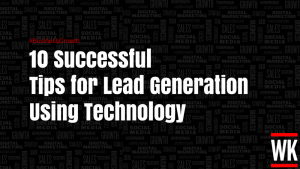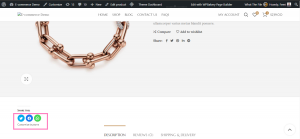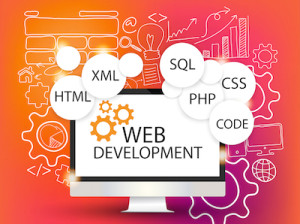In the last post in our series, we talked about the ever-present need for understanding search engine optimization (SEO). But when you’re a small business, it can be difficult to compete with much larger websites. Often, a potential customer using a search engine won’t even click past the first page of results – and if your website isn’t there, that customer may not find you at all.
Fortunately, SEO strategies aren’t the only ones available to you. In the second post of our series, we’re going to look at pay per click advertising – and how you can use it to your advantage.
What Is Pay Per Click Advertising?
You’re likely familiar with pay per click (PPC) advertising already, even if you don’t know the name. Think back to any time you’ve used Google. You probably noticed that several results on the page have “Ad” marked next to them. Those are the results of PPC advertising, and it extends beyond just search engines and into social media.
Much like a traditional advertisement or banner, PPC ads exist because the business has agreed to pay the search engine or website for its services. Unlike traditional advertising, though, PPC works on a click basis instead of a flat rate. As the same suggests, the business only pays a fee when someone sees the ad and clicks through to the connected webpage.
Because of this, PPC is a great option for small businesses who don’t have a large advertising budget. You only need to pay for when you get hits, so you don’t have to feel like you’re wasting money on advertisements that aren’t doing you any good. With a combination of SEO and PPC strategies, even a small business can hold a competitive advertising edge.
Where Can You Set Up PPC?
Several search engines provide PPC:
- As the foremost search engine, Google AdWords system provides PPC services. It can be expensive, but selecting niche keywords can make Google an affordable option on even a smaller advertising budget.
- As the second most popular search engine, Bing Ads tend to cost less than Google. Any PPC ads you set up through Bing will also display on Yahoo, so your ads can have a wider reach.
- Yahoo’s Gemini service (also referred to as Stream Ads) integrate ads into relevant content, allowing for a high engagement rate.
- If you’re trying to target a specific market location, Yelp can provide ads on both search results and even on competitor pages. You also get the advantage of extra engagement through sharing and reviews.
Likewise, you can also find PPC options on many social media platforms:
- One of the largest social media platforms, Facebook, also has a comparable number of PPC campaigns.
- Twitter can help with increasing exposure, crafting a brand voice, sharing content, and more. With Twitter’s increased character limit, you have more options for building your ads.
- If you feel you can build a strong video campaign, you should consider using YouTube Ads.
- Instagram is a great PPC choice for businesses that work with or can convey messages with photos and imagery.
- If you focus on business to business work, LinkedIn can help you reach relevant professional audiences.
- PPC campaigns aimed at women can find success in Pinterest’s high female user rate.
- Implementing business announcements, press releases, and calls to action all work well with Snapchat’s format.
These varied resources give you many options around which to build PPC strategies.
Building Your PPC Strategy
Not every business should use the same PPC strategies. An excellent PPC campaign takes advantage of the business’s specific needs. Before you rush to put up PPC ads across every available platform, consider which ones your audience uses. Make sure you’re targeting the right people so that you can bring results.
Even if you narrow down your PPC options to just a few, it’s best to only start with one campaign. If you’re not used to it, managing multiple ads and their budgets can quickly become a tangled mess. You want to know exactly what is happening in your campaign and how to best use it before you start adding other elements.
Much like in SEO, keywords are core to successful PPC. Not only are generic keywords more expensive, they don’t provide as much return for what you put into them. The more niche you can be, the less money you’ll pay while ensuring that your ads reach your desired audience. It’s also best to use geographic keywords whenever possible.
You’ll also want to make sure you word your ads well. Strong, concise wording will catch a customer’s attention and a clear call to action will encourage them to follow through on the ad. Focus on one action so that the prospect knows just what they need to do with little thought involved.
Once you have your strategy completed and your ad is out in the PPC world, keep a close eye on the results. There’s no sense in keeping an outdated ad running that doesn’t do anything for your business, even if you aren’t paying when no one clicks through. Use your results to improve your campaigns and keep driving conversions.
PPC can be tricky, especially when you start working with more campaigns. If PPC is successful for you and you start to see your business growing as a result, you may consider hiring a PPC professional for help. But to just start out, any small business can run a successful campaign.
No matter what combination of SEO and PPC strategies you use for your small business, it’s important to be sure you understand the result.
Series Articles
Part 1: Simple Tech for Small Business Owners, Part One: SEO
Part 2: Simple Tech for Small Business Owners, Part Two: PPC Advertising
Part 3: Simple Tech for Small Business Owners, Part 3: Google Analytics
Part 4: Simple Tech for Small Business Owners, Part Four: WordPress
Part 5: Simple Tech for Small Business Owners, Part 5: HTML
Part 6: Simple Tech for Small Business Owners, Part 6: HTTP vs HTTPS
Part 7: Simple Tech for Small Business Owners, Part 7: Video Campaigns
Part 8: Simple Tech for Small Business Owners, Part 8: CSS
Part 9: Simple Tech for Small Business Owners, Part 9: Domain Names
Part 10: Simple Tech for Small Business Owners, Part 10: How to Measure Your PPC Campaign
Originally from Digital & Social Articles on Business 2 Community(70)
Report Post







3 thoughts on “Simple Tech for Small Business Owners, Part Two: PPC Advertising”
Comments are closed.